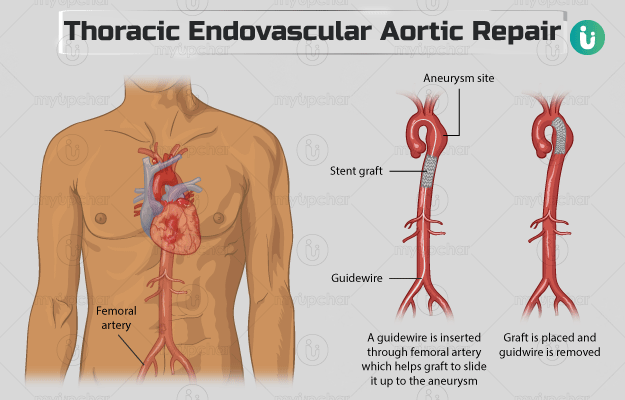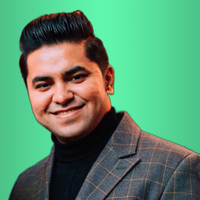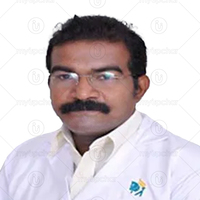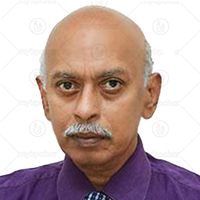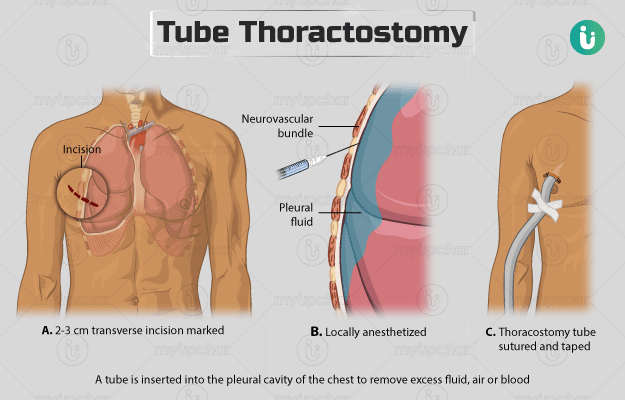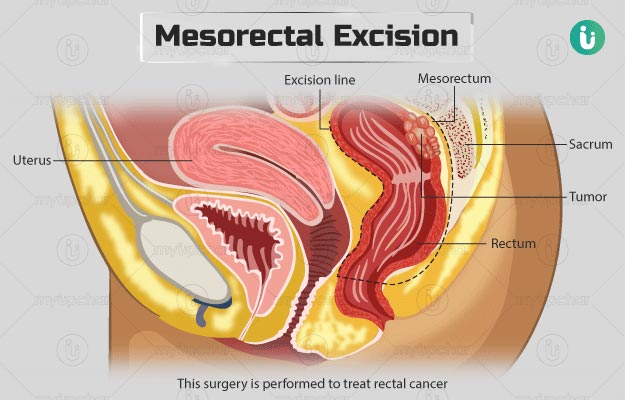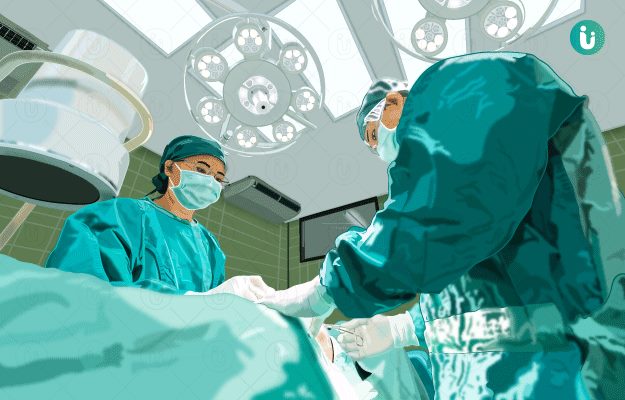Summary
Thoracic endovascular aortic repair (TEVAR) is done to treat an aneurysm, (a bulging) in the aorta, the largest artery that supplies oxygen-rich blood from the heart to the rest of the body. The procedure involves the insertion of a stent-graft, a metal tube covered with fabric, to attach and seal the aneurysm. The graft stops the supply of blood to the affected area and prevents bursting of the aorta. You will be asked to fast from midnight of the night before the surgery. The operation will be done under the effect of general anaesthesia.
After the surgery, you will stay in the hospital for three to four days. Your recovery will include breathing exercises, medications (blood thinners and cholesterol-lowering medicines), restrictions on activities, and wound care.

